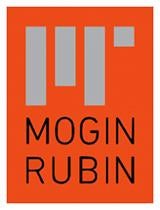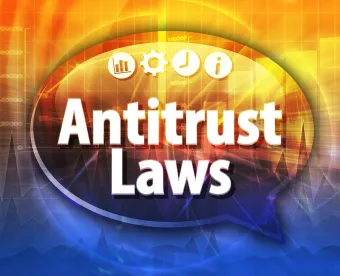Court affirms evidentiary rulings on market definition and overcharges. Agrees evidence supported verdict for collusion and attempted monopolization.
The Ninth Circuit Court of Appeals this month upheld judgment in favor of Optronic Technologies, Inc., finding there was sufficient evidence that Chinese telescope manufacturer, Ningbo Sunny Electronic (“Sunny”), conspired with a competitor in the U.S. consumer telescope market to allocate customers, fix prices, and monopolize the telescope market in violation of federal antitrust laws (Optronic Technologies, Inc., v. Ningbo Sunny Electronic Co., Ltd., No. 20-15837, 9th Cir. 2021). Ninth Circuit Judge Ronald M. Gould wrote the opinion.
California-based Optronic, known commercially as Orion Telescopes & Binoculars, sued Sunny in November 2014. Orion alleged Sunny violated Sherman Act Sections 1 and 2 by conspiring to allocate customers in the telescope market and conspiring to fix prices or credit terms for Optronics in collusion with Suzhou Synta Optical Technology. Orion further alleged Sunny’s 2014 acquisition of independent manufacturer, Meade, violated Section 7 of the Clayton Act. Orion alleged that Sunny engaged in these anticompetitive acts to force Orion out and further monopolize the telescope market.
A California jury found in favor of Orion on all counts and awarded the company $16.8 million in damages, which the district court trebled to $50.4 million. The district court also ordered injunctive relief, directing Sunny to supply Orion and Synta’s Meade on non-discriminatory terms for five years, and not to communicate with Synta about competitively sensitive information.
Rulings on key elements of plaintiff’s economic evidence affirmed.
Sunny appealed on several grounds, including two that challenged key elements of the plaintiff’s expert economic evidence. The jury had found Sunny liable for attempted monopolization and conspiracy to monopolize in violation of Section 2, which makes it unlawful for any person to monopolize or attempt or conspire to monopolize any relevant market. Sunny argued on appeal that the evidence could not support a Section 2 verdict because Orion’s economist failed to define a relevant market. In particular, Sunny claimed the expert did not examine the cross-elasticity between substitute products in the market or perform a SSNIP test, the standard analysis used to delineate the outer boundaries of a relevant market.
The appeals court found these contentions lacked merit. The plaintiff’s economist had testified that the relevant product market was the market for telescope manufacturing services. The purpose of the SSNIP test is to determine whether the relevant market is drawn too narrowly and should be expanded to include potential substitutes. But because no other manufacturing capacity can substitute for telescope manufacturing services, wholesale purchasers of telescopes cannot turn to other manufacturers to fulfill orders. Without substitutable manufacturers, a SSNIP test boils down to whether new manufacturers would enter the market fast enough to make an increase in price unprofitable for a hypothetical monopolist, which they could not. As a result, the court held that the economist reasonably could forgo performing a SSNIP analysis.
Sunny also challenged the economist’s estimate of anticompetitive overcharges that could not directly be observed. Neither the “benchmark” nor “before-and-after” estimation methods were available. Therefore, to develop a measure of damages, the plaintiff’s expert presented two different methods of estimating the overcharges. In the first method, the expert collected data on cartel overcharges from the economic literature on markets with structures and conditions similar to telescope manufacturing. The average of those overcharges was then used as an estimate of the overcharge resulting from defendants’ collusion. As a check on this estimate, the economist also submitted a theoretical Cournot equilibrium model of market prices based on assumptions drawn from the record in the case. The two methods yielded similar and consistent results. Affirming the admissibility of the expert’s damages estimates, the appellate court found the expert’s report and testimony “were sufficiently tied to the facts of this case such that the district court properly admitted this evidence.”
In rebuttal, the defendant’s economist testified to the high sensitivity of the assumptions used in the plaintiff’s theoretical model. Interestingly, defendants were not permitted to submit their own estimate of damages for the first time on rebuttal, so the defendants’ expert had to limit her testimony to the sensitivity of the model without the ability to show the jury any resulting alternative estimate of the anticompetitive overcharge. The appeals court affirmed the trial court’s limitation on the defendants’ rebuttal expert.
Price fixing and a larger scheme.
Sunny also argued that Orion failed to present sufficient evidence to support Orion’s Section 1 claims. Section 1 prohibits unreasonable restraints of trade. Horizontal price fixing and market allocation are per se unreasonable and support Section 1 liability without regard to any purported justification or defense. The Ninth Circuit noted that Orion offered evidence that Synta executives encouraged Sunny’s purchase of Meade, an acquisition that was part of a larger scheme by Sunny and Synta to jointly control the telescope manufacturing market, even though federal regulators had already prohibited such a combination. The court also declined to upset the jury’s finding that Sunny conspired with a Synta subsidiary to fix prices and credit terms to Orion, a per se violation of Section 1.
“If you break it, you buy it.”
Finally, it is notable that the appellate court affirmed the award of damages accruing after September 2016, when the defendant and Synta took their last steps to eliminate Meade, and Synta entered a Settlement and Supply Agreement with Orion. The court held that, even if the conspiratorial acts of Sunny and Synta ended in 2016, Orion could still recover post-2016 damages “because it continued to suffer economic harm from the harm to competition caused by the illegal concerted activity.” Thus, where collusion causes a durable change in market structure or sets the pattern of a continuing collusive practice, it is no defense that the conspirators may have ceased engaging in concerted action.
The rule adopted by the Ninth Circuit in Optronics is clear: “[W]here an antitrust plaintiff suffers continuing antitrust injuries from anticompetitive changes to market structure that arose from a proven antitrust violation, we hold that the violation may be a material cause of that injury, and so recovery of damages is permitted, even after the last proven date of the violative conduct. This rule accords with the common-sense principle that ‘if you break it, you buy it.’”
Welcomed clarity.
The Ninth Circuit’s opinion brings welcomed clarity on several points. It demonstrated that plaintiffs need not perform a SSNIP test where market-specific circumstances define a market’s outer boundary. For claimants facing the need to estimate unobservable anticompetitive overcharges, it affirms an ingenious method for arriving at a reasonable and reliable estimate. And, for past conspiracies with continuing anticompetitive effects, the decision announces the common-sense principle that a defendant “remains liable for the continuing injuries suffered by plaintiffs from the structural harm to competition that its unlawful scheme brought about.” Put simply, this is a well-articulated decision by a capable panel that adds precision and certainty to antitrust.
Edited by Tom Hagy for MoginRubin LLP





 />i
/>i

